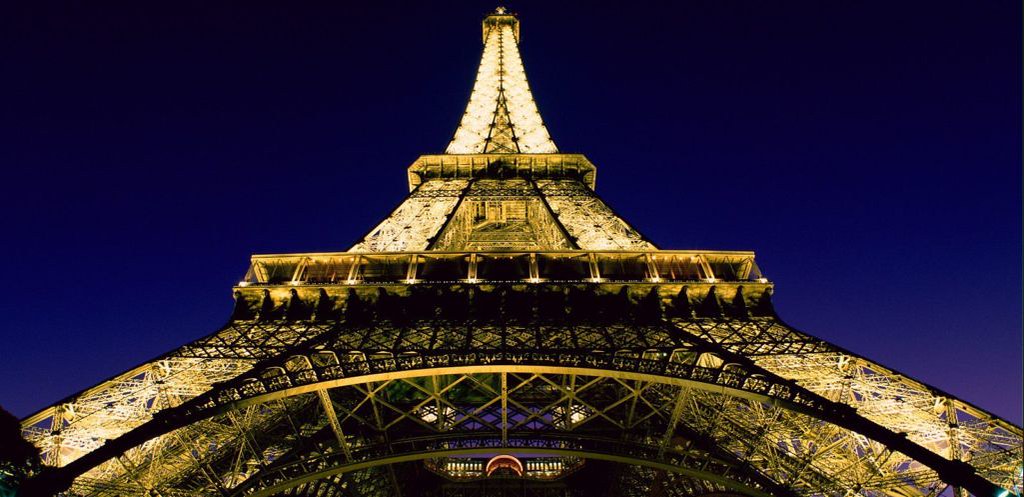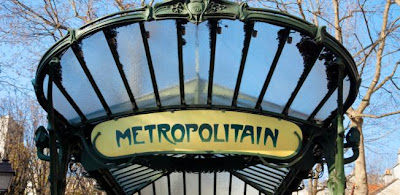 |
| FRANCE |
The best way to get around Paris is by foot. The elegant arrondissements are practically made for pedestrians. Still, Paris is very big, so you should use the one of the RATP public transportation system to travel long distances. Taxis are another option, but driving is NOT recommended.
If you're traveling from other French or European cities, you might find that the train is the cheapest way of getting to Paris. The city has six main train stations, all of which also act as a bus stop and métro station, so you'll be able to get from the station to your hotel quite easily. Another option is to fly into Paris-Orly Airport, located less than 10 miles from the city. You can take the chunnel (underwater rail service) from London.
RER
Transilien
Local city buses
Noctilien Night bus
Balabus Sightseeing bus
Eurolines long distance buses
Taxis
Cycling
Batobus
PUBLIC TRANSPORT
The RATP
operates the public transport system of Paris,
which includes the Metro, buses, night buses, Montmartrobus and
Montmartre
Railway and the RER trains. Except the RER trains, you can purchase
individual tickets, booklets of ten tickets, or even better Paris
Visite Metro Pass
designed expressly for visitors and offering unlimited travel.
A single metro ticket costs €1.70, and can be used for one journey,
including all connections. White-coloured
tickets can be purchased
singly or in a book of 10 (“carnet”) for €12,70, at the ticket offices
or machines in metro stations, and also in some tobacconists. Keep hold
of your ticket until you have completed your journey, as you may be
asked to show it if tickets are being inspected. If you cannot produce
proof of payment for the ticket inspectors, you may risk paying a fine.
This ticket, valid for zones 1 and 2, allows you to travel anywhere in
Paris. It remains valid for 2 hours until you leave the
metro by going though the exit barriers. If you then take a bus, you
need to use another ticket. Note that the new white tickets
(as opposed to the old purple ones) allow for multiple bus and tram
rides with 90 minutes of first use.
Mobilis tickets are valid for unlimited travel on Métro, bus, tram and RER lines during a single day within a set number of zones. For travel within the city, the minimum two zones (6.10€) suffice, but for travel beyond, five zones (13.65€) is enough to reach the airports, Disneyland-Paris and Versailles.
|
Paris Mobilis Pass |
Basic “Paris Visite” passes are also good for unlimited travel, but available for longer stays of one (9.30€), two (15.20€), three (20.70€) and five (29.90€) days. Paris Visite passes that extend to further zones are 19.60€, 29.90€, 41.90€, and 51.20€. Unlike Mobilis tickets, Paris Visite also gives you reduced fares for some museums and bus tours. Passes for children 4 to 10 years old are half price. Children under 4 travel free.
|
Paris Visite Pass |
The “NaviGo Découverte” pass costs €18.35 for a full week of unlimited metro and bus transport inside zones one and two, with travel in additional zones going up by minimal increments. The ticket salesperson may try to tell you the pass is for “locals only” but anyone can purchase the card. The card itself costs €5, plus the additional weekly (the “week” runs Monday through Sunday) charges for the zone of your choice.
|
Paris Navigo Découverte |
Visit these links to learn step-by-step how to use the Paris Transit System.
Metro:
|
Paris Metro |
The quick and easy way to travel around
the city, as well as the best value.
The Paris metro has around 300 stations, their entrances marked by a
big yellow
“M”, and 16 lines, numbered from 1 to 14, 3 bis and 7
bis, while the
direction of trains is indicated by the name of the last station on the
line. Each line
has a
colour, which you’ll find on signs in the stations and on all the RATP
maps.
Connections between lines make your journey easy to plan. For an idea
of your
journey time, allow an average of 2 minutes per station and add 5
minutes for
each connection.
Each line has two directions, indicated by
the terminus station at each end. The different directions and
connections are clearly displayed on blue and white signs on the
platforms and in the tunnels. To be sure you’re heading in the right
direction, check that your destination is on the list of stations just
before you go down onto the platform. Inside the trains, you’ll find
network maps and the detail of the line you’re on along with all
available connections to other parts of the network.
The metro operates every day including
public holidays from around 6am to 0.30am. The entire Parisian metro
service will operate on Saturday evenings
until 2.15 am and on Friday evenings until 2.15am. Times of the first
and last
trains vary depending on the point along the line that you are
departing from. Trains are less frequent on Sundays and public
holidays. Illuminated signs above the platform indicate the length of
time until the next train arrives. Fast and fully automated, the newest
line 14, also known as Météor, offers a regular service throughout,
Sundays and public holidays included. On this line, a verbal
announcement indicates the name of each stop.
Free maps of the public transport network, in
all shapes and sizes, are available at the ticket
offices, as well as at the all the information centres of the Paris
Convention and Visitors Bureau. Large-scale maps are also displayed on
the platforms and at the entrance to each station.
RER (Suburban Express Railway)
|
Paris RER |
Regional commuter trains extend the reach of public transport into the Paris suburbs. The RER, covering most of the Ile-de-France region, consists of 5 lines referred to by the letters A, B, C, D and E. Within Paris, the RER operates in more or less the same way as the metro, except that you need to put your ticket through the automatic barriers a second time on the way out. If your RER station has a connection with the metro, you can use the same ticket for the whole journey.
Using the RER, faster than the metro because stops are less frequent, you can cross Paris in 15 minutes. It operates every day, including public holidays, from around 6am to 0.30am.
In the RER, as long as you remain within the city limits, tickets and prices are identical to the metro. If you are travelling beyond the city limits, you need to ensure that you are in possession of a ticket or a pass which covers your whole journey up to your destination in the Ile-de-France region, including while traveling to or from the airports, Versailles, and Disneyland© Paris. If not, you will not be able to go through the automatic barriers on arrival and you may be liable to a fine. The RER ticket also covers your journey and any connections within Paris (zones 1 and 2), on your outward and return journeys.
The Montmartre Funicular railway travels up and town the hill to La Basilique du Sacre Coeur, one ticket is needed for each direction.
Transilien
|
Paris Transilien |
Transilien is the term used to designate Paris suburban and regional trains serving the various cities and towns of the Ile-de-France, the region surrounding metropolitan Paris. These trains depart from main-line stations in Paris (Nord, Est, Lyon, Austerlitz, Montparnasse and Saint-Lazare) and follow the same pricing zones (from 1 to 6) as the RER. Tickets and travel passes can be purchased at the “Ile-de-France” ticket offices and machines in the stations, as well as in metro/RER stations.
Free timetables are available at ticket offices in the stations. Suburban lines complement the RER network, sharing several links.
Local Bus
|
Paris City Bus |
Don’t hesitate to travel by bus, it’s a great way to discover the city. There are a wide variety of routes, many of which go though the city centre, along the Seine River banks or through well-known historical areas. For an idea of your journey time, allow around 5 minutes per stop, sometimes more if the traffic is busy.
Paris bus routes are numbered and operate from Monday to Saturday from 7am to 8.30pm or thereabouts. Some bus lines also operate in the evening from 8.30pm until 0.30am, in particular those that begin at train stations or serve major metro and RER links, as well as the 3 circular PC routes. Around half of the buses also run on Sundays and public holidays.
On the buses, you use the same tickets as in the metro, with no limit of distance (including suburbs), except on the Balabus, Noctilien and routes 221, 297, 299, 350 and 351. The bus driver can sell single tickets, be sure to have the correct change. Your ticket is only valid for a single journey, with no connections. You will need another ticket if you change on to a different bus route or connect with another form of public transport.
When your stop is approaching, just press one of the red buttons dotted throughout the bus. The sign “arrêt demandé” (stop requested) will light up at the front of the bus above the driver’s cabin. Within each bus there is a network map and the detail of the route.
Bus stops can be either glass-covered shelters or simply poles. They display the numbers of the buses that stop there and the itinerary of each. There are also details of the first and last departures, and the average waiting time between buses. The number and terminus are displayed above the driver at the front of each bus, and on the sides. You must indicate to the driver as he approaches if you wish him to stop. In general you must get on the bus at the front and get off by the middle or back doors, except for the articulated “bendy buses” where you can get on or off at any door by pressing the button beside the door. Remember to punch your ticket in the machine as you get on or show your pass to the driver.
There is a special bus called the Montmartrobus, number 64, that circulates in the Montmartre district. Only the name is special, the fare stays the same though.
The free public transport maps available in metro and RER, stations, bus terminals and the Paris Convention and Visitors Bureau, also show bus lines. Most shelters display the name of the stop to help you keep track of where you are. If only a few people are waiting for the bus, signal the driver to stop.
The Noctilien (Night Bus)
|
Paris Noctilien |
If you just missed the last metro or you’re too early for the first one at 6am, the “Noctilien” will allow both residents and visitors to make the most of Paris by night and still be able to get home easily. You can use your travel pass or a metro/bus ticket if it covers the zones concerned (the same zones as for the metro/RER).
Nightbuses (Noctilien) take over at 0.30am till 5.30am, but these are labeled with letters not numbers. The “Noctilien” network means 42 lines throughout Ile-de-France and increased frequency, better visibility (clearer signage), greater access and improved welcome!
Balabus
|
Paris Balabus |
Balabus is a special sightseeing route which takes you around the majority of the capital’s main sights, from east to west, from the Gare de Lyon to the Grande Arche de la Défense: Bastille, the Marais, Ile Saint Louis, Notre-Dame, the Louvre, Orsay, Invalides, the Eiffel Tower and the Champs-Elysées…
The Balabus operates from April to September, on holidays and Sundays, from 1.30pm to 8.30pm from the Gare de Lyon, or from 12.30pm to 8pm from the Grande Arche at La Défense. The circuit takes about an hour, with departures every 15 to 30 minutes. The fare is 1.60€ (free with the Paris Visite pass) and can vary according to the length of the journey (from 1 to 3 metro/bus tickets); Métro tickets may be used.
Long-distance buses
|
Paris Eurolines |
Eurolines, an association of more than 30 national and private bus companies that links Paris with points all over Western and Central Europe, Scandinavia and Morocco, can organise ticket reservations and sales. The Gare Routière Internationale de Paris-Galliéni (08 92 89 90 91; 28 av du Général de Gaulle; Gallieni), the city’s international bus terminal, is in the inner suburb of Bagnolet.
Taxis
|
Paris Taxi |
Taxis can be convenient, but they can also be a hassle. Unlike other forms of public transportation in Paris, taxis are available 24 hours a day, and with more than 15,000 cabs rolling through the streets, finding one is usually not a problem. However, if you're searching for a cab during lunchtime, dinnertime, within an hour after the Metro has closed for the night, or during a sudden downpour, you may have better luck at a taxi stand than you will have trying to hail one from the street. Fares are more expensive than Metro or bus tickets, but by city standards are not too bad, with the average trip around town running less than 20 euros.
There are more than 470 taxi stands in Paris, marked by blue signs with the word TAXI written in white. They are generally located on street corners, outside railway stations and official buildings, and at airports. Take the taxi at the head of the line, and be prepared to pay the driver in cash, since credit cards and checks are rarely accepted.
Fares increase at night and early in the morning. Taxis normally take a maximum of three passengers and have limited space for luggage. Fares between Paris and the airports are 20-45 €, depending on destination, time of day, and traffic conditions. Additional charges are assessed for picking up passengers at airports or train stations, for a fourth person, for luggage, and for domestic animals.
Cycling
|
Paris Velib Bike |
On Sundays and public holidays, some of the Seine expressways and canal roads are reserved exclusively for pedestrians, cyclists and rollerbladers. However, if you want to tour Paris from a bike, make sure you keep in mind the highway code (fines are always possible), and don’t forget the necessary equipment: bell, 2 brakes, sidelights and insurance. The wearing of helmets is strongly recommended. And get yourself a good anti-theft device.
The city's Velib' bike-share program put thousands of self-service 3-speed bikes on the streets that are sturdy, inexpensive and easy to pick up and drop off for locals and tourists alike. Unlike the metro, which closes at 1am, Vélib' stations are opened 24/7.
Boat
|
Paris Batobus |
One of the more entertaining ways to travel in Paris is via the Batobus, which is a shuttle-boat service that enables you to take trips along the Seine River. For one price you can ride all you'd like and with boats departing every 15 minutes, stopping at the Eiffel Tower, Musée d’Orsay, St-Germain-des-Prés (Quai Malaquais, on the Left Bank opposite the Louvre), Notre-Dame, Jardin des Plantes, Hôtel de Ville, Louvre and Champs-Elysées, allowing passengers to disembark or board.
The service operates from end March to beginning January: from 10am to 7pm in March, April and October; until 9pm in May to September; and from 10:30am to 4:30pm in November, December and January. The fare is 14€ for an all-day pass, 18€ for a two-day pass and 21€ for five days. Children under 16 are half price. Tel. 08 25 05 01 01.
























8 comments:
Thanks for a great blog. Travelers in Paris are usually looking for one of four shuttle options which are Charlles De Gaulle airport, Orly airport, Beauvais airport or Euro Disneyland. So we are offering Best Shuttle Service in Paris. Please contact us for more information and details. Our professional experts are always ready to assist you.
The blog post you have shared is very helpful.Thank you for posting..
Transport to Disneyland Paris
I really like to read this post, it shares lots of information with us.
Orly Airport to Disneyland transfer
Nice blog, great information for sure. Premium Paris Airport transportation service agency offers Paris airport transfer services to Disneyland. Book your cheap taxi with private transfer Disneyland Paris. Book Online!
charles de gaulle to Disneyland
Nice blog! I read your article. I really like all the points that you mentioned are interesting and helpful. Thank you for sharing this blog.
Orly to Disneyland Paris
This is the kind of post I was looking for, Disneyland Paris Versailles Taxi Transfer firm offers affordable Disneyland Paris Versailles Taxi Transfers service. Call us +33 973671225 and hire Disneyland Paris Versailles Taxi.
Paris airport to Disneyland transportation
Cdg paris cab private transfer from Charles de Gaulle Airport to Disneyland Paris Minivan taxi booking Cdg disney transfer https://cdgpariscab.com/booking/
Post a Comment
Welcome and thanks for leaving a comment